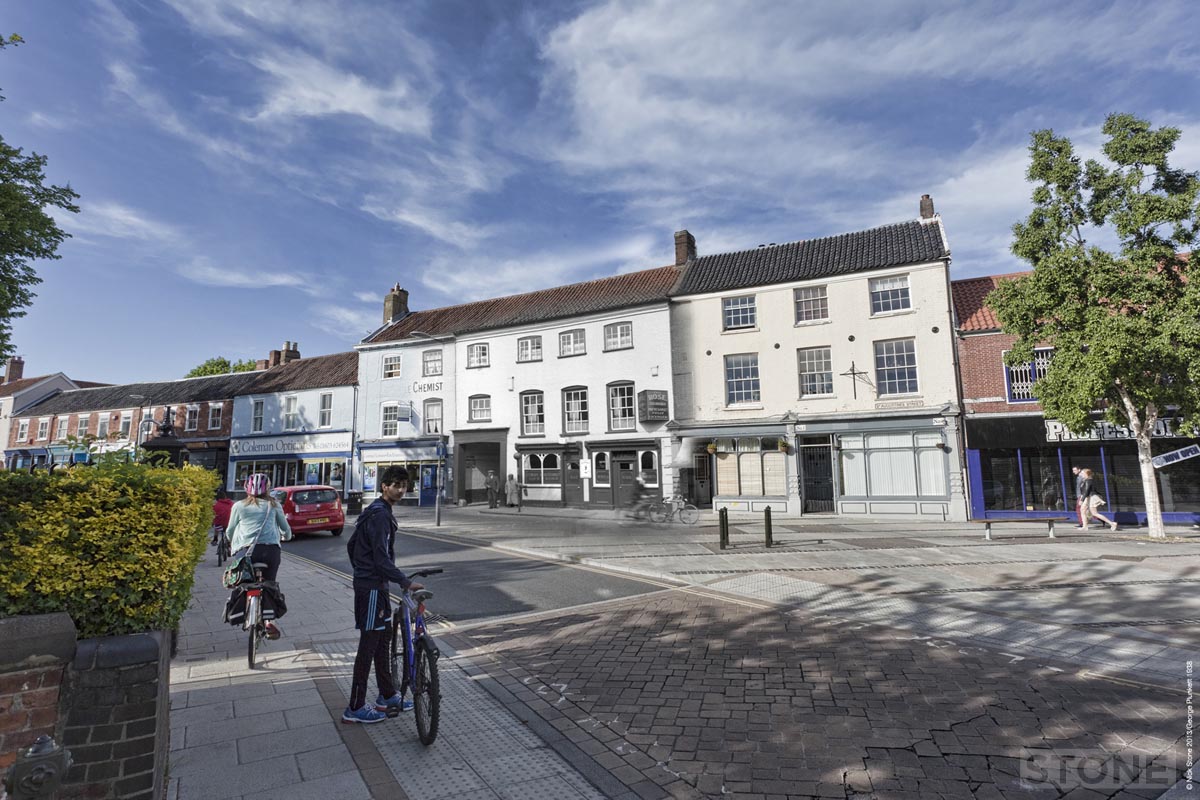![St Augustine's St Rose Yard 4 to 8 [2132] 1938-03-07](https://www.invisibleworks.co.uk/wp-content/uploads/2015/01/St-Augustines-St-Rose-Yard-4-to-8-2132-1938-03-07-224x300.jpg) The Rose Tavern (previously also known as The Rose Inn), popular little pub on St Augustines, one of about six. It died in the 1980s after the Big Red Barrel war that spelled the end of so many pubs and ushered in an era of quite unpleasant fizzy rubbish beer that is now being ushered away slowly by a lot of pubs. Sadly not before huge rents and extortionate beer prices of the grubby property owning big commercial brewery chains have strangled quite a few more. Thankfully the resurgence in micro-breweries continues apace, I’m glad, it pleases my tastebuds, as at just under the age of majority in the early 1980s, my dad and my brother-in-law who may or may not have supped a pint in here introduced me to “real ale”, which despite dalliances with lager in the late 1980s has stuck with me as a favoured tipple of an evening. Evidently it was at some point in the past a coaching house and is reputed to have had fine stabling, it is believed to have been an Inn from 1402. Through the archway ran Rose Yard, which was atypical of a lot of the living spaces in the area, with three storey tenements a factory and a chapel, Coleman’s Opticians is on the site of the former De Carle’s Chemist, you can see part of the wall-painted sign on Plunkett’s view now lost under paint, a variation on a trade in one place since 1870.
The Rose Tavern (previously also known as The Rose Inn), popular little pub on St Augustines, one of about six. It died in the 1980s after the Big Red Barrel war that spelled the end of so many pubs and ushered in an era of quite unpleasant fizzy rubbish beer that is now being ushered away slowly by a lot of pubs. Sadly not before huge rents and extortionate beer prices of the grubby property owning big commercial brewery chains have strangled quite a few more. Thankfully the resurgence in micro-breweries continues apace, I’m glad, it pleases my tastebuds, as at just under the age of majority in the early 1980s, my dad and my brother-in-law who may or may not have supped a pint in here introduced me to “real ale”, which despite dalliances with lager in the late 1980s has stuck with me as a favoured tipple of an evening. Evidently it was at some point in the past a coaching house and is reputed to have had fine stabling, it is believed to have been an Inn from 1402. Through the archway ran Rose Yard, which was atypical of a lot of the living spaces in the area, with three storey tenements a factory and a chapel, Coleman’s Opticians is on the site of the former De Carle’s Chemist, you can see part of the wall-painted sign on Plunkett’s view now lost under paint, a variation on a trade in one place since 1870.
So anyway, The Rose Tavern and Rose Yard, sitting in it does in an area famously poor for centuries, sits on the site of an inn that had lived here from the 14th century. In it’s later history it was a Stewart and Patterson Pub and latterly a Watneys house (of the Big Red Barrel), became the old Crome in 1972 and died in 1984. It has since been a Portrait studio, but has been boarded up for the last 10 years at least. Someone recently painted the hardboard yellow and put some little hanging baskets up which the cruel 2013 spring winds removed, they did it to highlight the need for regeneration in a street that has got some of it’s life back already, It’s nice to see bicycles in both.

Original photo: George Plunkett, used with the kind permission of Jonathan Plunkett. Inset Photo: George Plunkett 1938.

